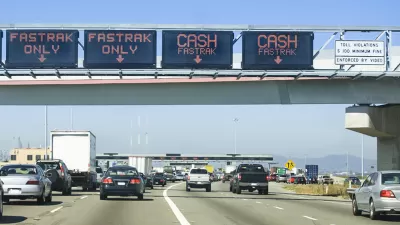With the federal government unable to agree on much of anything, state and local taxpayers are bearing the burden for repairing and replacing America's aging infrastructure says a new report from Standard & Poor’s Rating Services.
One of the many issues to have been largely left out of this year's presidential debates, America's growing infrastructure deficit (twice the size of the federal budget deficit) is unlikely to be addressed anytime soon by a federal government unable or unwilling to discuss trillions of dollars of new spending, reports Ashley Halsey III. In addition to the billions of dollars needed to replace aging roads and bridges, $30 billion is needed for the nation's ports, $107 is needed for the electrical grid, and $635 billion is needed to fix waste and drinking water systems.
"We see an expectation in the foreseeable future for reduced federal
funding," said Geoffrey E. Buswick, the analyst who wrote a recent Standard &
Poor's report on the subject. "The longer there is a tepid economic recovery,
the more difficult it is to raise rates. There's already a gap in
funding and it's only going to get greater, so it's the longer term that
we're more worried about than the shorter term."
While some of the funding for necessary infrastructure repairs may come from private investors, local users and taxpayers are increasingly being targeted to fill the federal shortfall.
FULL STORY: Burden for rebuilding infrastructure may fall to states

Manufactured Crisis: Losing the Nation’s Largest Source of Unsubsidized Affordable Housing
Manufactured housing communities have long been an affordable housing option for millions of people living in the U.S., but that affordability is disappearing rapidly. How did we get here?

Americans May Be Stuck — But Why?
Americans are moving a lot less than they once did, and that is a problem. While Yoni Applebaum, in his highly-publicized article Stuck, gets the reasons badly wrong, it's still important to ask: why are we moving so much less than before?

Using Old Oil and Gas Wells for Green Energy Storage
Penn State researchers have found that repurposing abandoned oil and gas wells for geothermal-assisted compressed-air energy storage can boost efficiency, reduce environmental risks, and support clean energy and job transitions.

Minneapolis Bans Rent-Setting Software
Four cities have enacted restrictions on algorithmic software that can inflate rent costs.

Oakland to Add 244 New EV Chargers
Oakland plans to launch its new charging network at eight locations by the end of 2025.

Jane Goodall Inspires with Message of Hope, Resilience, and Environmental Action
Speaking in Pasadena, Jane Goodall offered a hopeful and inspirational message, urging global compassion, environmental responsibility, and the power of individual action to shape a better future.
Urban Design for Planners 1: Software Tools
This six-course series explores essential urban design concepts using open source software and equips planners with the tools they need to participate fully in the urban design process.
Planning for Universal Design
Learn the tools for implementing Universal Design in planning regulations.
Heyer Gruel & Associates PA
City of Moreno Valley
Institute for Housing and Urban Development Studies (IHS)
City of Grandview
Harvard GSD Executive Education
Salt Lake City
NYU Wagner Graduate School of Public Service
City of Cambridge, Maryland





























